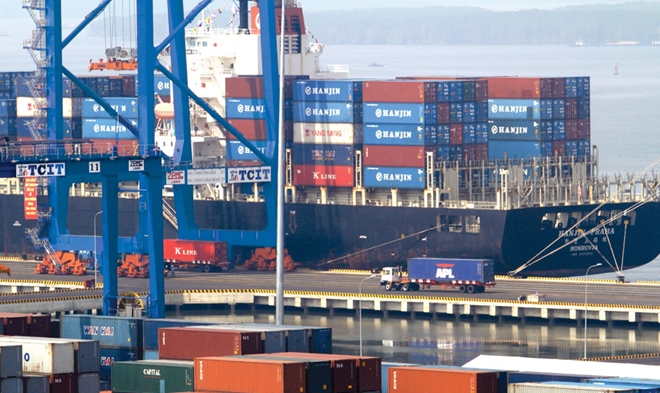Symposium addresses Vietnam freight, logistics challenges
- Đà Nẵng launches logistics trawler
- Theoretical framework of Logistics Techniques
- Vietnam, New Zealand look to stronger economic ties
In his address, Mr Hai put forth the proposition that the country’s metropolitan leaders along with their governmental peers must design and give effect to policies that address the new reality of the country’s modern metropolis.
 |
| Today’s global economy is fast-moving, highly competitive and more metropolitan-centred than ever. (Photo: Internet) |
At the September one-day event held in Ho Chi Minh City, leaders and experts from all parts of the transportation supply chain discussed this new logistics reality and other formidable challenges.
National trade statistics generally look only at how businesses physically located in Vietnam trade with other countries, explained Mr Hai. However, when electronics built in HCM City are sold to a consumer in Hanoi we can’t see that in the country’s trade statistics.
This is one of the many shortcomings of placing too much emphasis on the national trade statistics and not delving into the domestic figures on a much deeper and more informed level.
The overwhelming majority of Vietnam trade is concentrated in the large metropolitan areas of the country in cities like Hanoi, HCM City, Danang, Hai Phong, Can Tho and Bien Hoa, noted Mr Hai.
Without a full understanding of how these trade networks work together, leaders in both the public and private sectors cannot develop targeted freight strategies and transportation investments to support the extensive supply chains that underpin the economy.
Most of the country’s traffic congestion also occurs in the larger metropolitan areas and it is vitally important to realize that gridlock in one large city delaying trucks transporting goods can negatively impact urban areas in other parts of the country.
There is a nationwide connection between commerce and urban trucking and there should be a coordination of digital communications throughout the logistics supply chain to have a synergistic effect on efficiency, which in turn promotes domestic economic growth, Mr Hai added.
Mr Le Duy Hiep, chair of the Vietnam Logistics Association in turn discussed new government policies and regulations as well as the status of official development assistance, grants and other preferential loans aimed at funding critical transportation projects designed to benefit the movement of freight through the country.
He noted that the foreign sector has had many companies operating in the country, some of them for decades, and that they have invested most heavily in the logistics supply chain of the country. The domestic sector investment can be described as marginal at best, he noted.
Mr Hiep stressed the importance of additional funding to improve the country’s rapidly aging transportation infrastructure. Without it, the government can only hope to preserve the current system, and would be unable to tackle the many strategies on the national action agenda.
Delegates also discussed implementing action plans for improving country-wide freight systems and a new policy framework and strategies to guide planning and investment in various other transportation modes. The action agenda will drive freight system improvements for the next five to 10 years.

